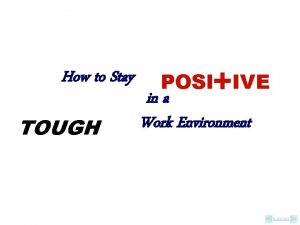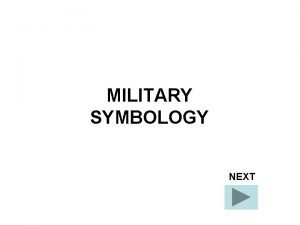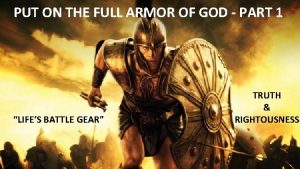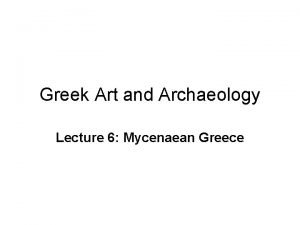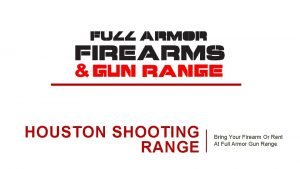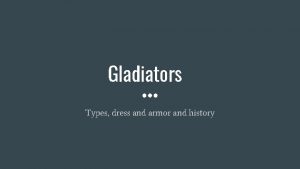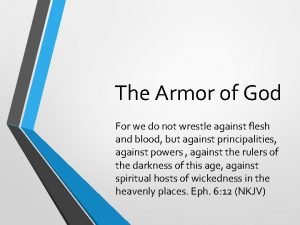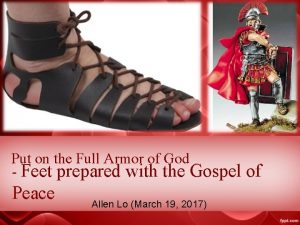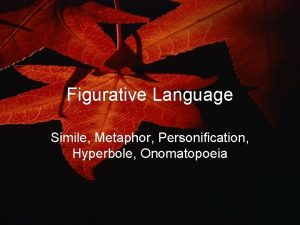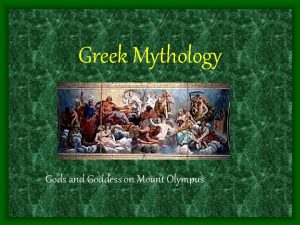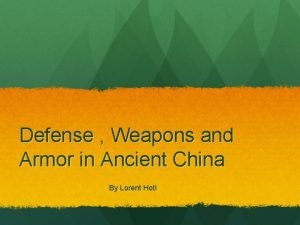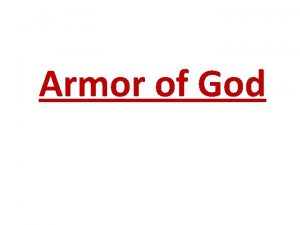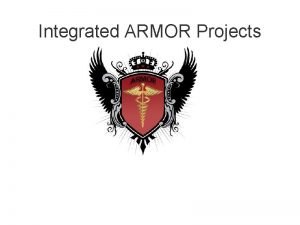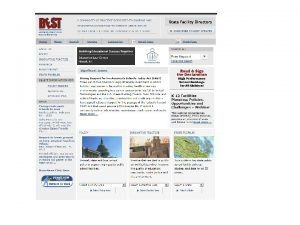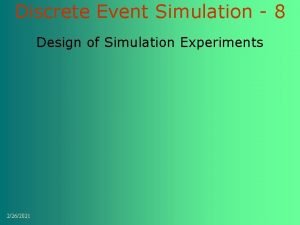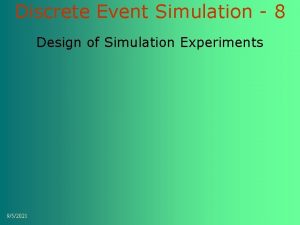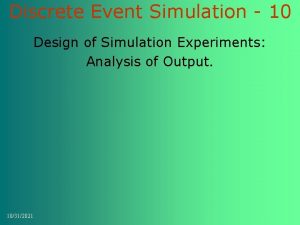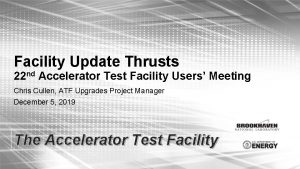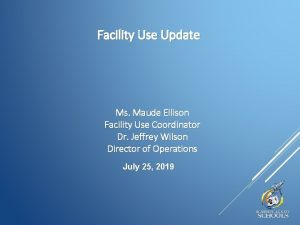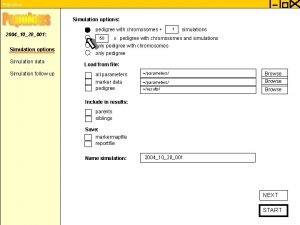Update on Armor Simulation Experiments At Dragonfire Facility













- Slides: 13

Update on Armor Simulation Experiments At Dragonfire Facility Farrokh Najmabadi and John Pulsifer HAPL Meeting June 20 -21, 2005 Lawrence Livermore National Laboratory Electronic copy: http: //aries. ucsd. edu/najmabadi/TALKS UCSD IFE Web Site: http: //aries. ucsd. edu/IFE

Experimental Setup RGA Laser entrance High-Temperature Sample holder QCM “Catcher” slide Thermometer head

Armor Irradiation Test Matrix Ø MWG Comments: Some of the temperatures requested by the MWG were not run, due to a miscommunication. ü Recommended Test matrix: Initial Temp. Final Temp. * DT No. of Shots 600 o. C 2, 500 o. C 1, 900 o. C 103 , 104, 105 600 o. C 2, 000 o. C 1, 400 o. C 103 , 104, 105 RT† (100 o. C) 2, 000 o. C 1, 900 o. C 103 , 104, 105 RT† (100 o. C) 1, 500 o. C 1, 400 o. C 103 , 104, 105 ü Samples: Powder metallurgy tungsten samples from Lance Snead. * Test with final temperature of 1, 500 o. C was not performed as we cannot measure that temperature at present. RT to 1, 400 o. C was performed using the same laser energy as 600 -2000 o. C test (temperature not measured). † Test were performed for equilibrium temperature of 100 o. C (due to lack of active cooling of sample).

Profilometry of Treated Samples Ø MWG Comments: We would like to see profilometry of treated samples, rather than just micrographs. ü Surface roughness for high shot rates is too large for WYKO to show meaningful results. We are obtaining a stylus profiler. Ø Surface profile of sample from previous run (103 shots; RT to 2, 500 o. C) ü RMS roughness: 0. 2 mm

Sample Baking Ø MWG Comments: UCSD might consider "baking" samples … We believe that baking samples at 1000 o. C for a few minutes should be adequate. Ø It would take about 15 -20 minutes to heat a sample to ~500 o. C. So, in previous tests, samples were “baked” effectively at 500 o. C for 15 -20 minutes. Ø It would take 1 -2 hours to heat the sample to 1000 o. C and cool down to ~500 o. C. It would take much longer to cool down to “RT” (because of lack of active cooling of sample holder). Ø In the test runs, we have baked the sample to 900 o. C before starting the test for 104 shots. The chamber was brought to air to reposition laser/thermometer head for 103 and 105 shots (but not baked at 900 o. C). Ø Samples were baked to 900 o. C instead of 1000 o. C due to the limitation of sample holder (discussed next slide).

Sample Holder Is Made of Mo Alloy Ø MWG Comments: The MWG would like to know what materials UCSD uses for sample holders. Tungsten is probably best. Ø Sample holder is made of a Mo alloy. Ø Sample is held in place by two steel screws ü Screws became very soft during first baking to 1000 o. C, thus baking was done at 900 o. C Ø There is no observable change in W sample at points of contact with steel screws.

No Visible Change in Material Behavior After Baking at 900 o. C 370 m. J, Start=600 o. C, Peak= ~2, 300 o. C, Baked at 900 o. C 370 m. J, Start=500 o. C, Peak= ~2, 300 o. C, Baked 103 shots at 500 o. C (previous runs) High Magnification 104 shots 105 shots

SEM of Untreated Samples Show Structures and “Impurities” Sample D: 100 o. C, 370 m. J ( ~2, 000 o. C) Sample C: 100 o. C, 240 m. J ( ~1, 500 o. C) Sample B: 600 o. C, 370 m. J( ~2, 500 o. C) Impurities? Ø All Samples from Lance Snead with the same lot number. Ø SEM of unexposed part of sample after laser exposure.

Sample tests were performed at a fixed laser energy (no feedback to fix DT) Evolution of sample DT: ü Prior to test, we measure the sample DT as a function of laser energy on a separate sample and choose laser energy to give the desired DT. We may not get exact DT during material test due to changes in sample reflectivity (baking, mounting, etc. ) Error in Temperature Measurement: ü Thermometer is calibrated based on melting point of W (3, 700 K). This leads to relatively larger errors (~10 -15%) in lower temperatures (~2, 0002, 500 o. C). ü At present, thermometer cannot measure temperature below ~2, 000 o. C Ø Above issues will be addressed before next set of runs: ü Upgrade thermometer ü In-vacuum re-positioning of laser imprint/thermometer

Effects of Shot Rate and Temperature Rise Sample D: 370 m. J, 100 o. C, Peak= ? (~1, 700 o. C DT? ), Baked at 900 o. C Less damage in Sample D at 104 shots: ü “More uniform” Sample? Sample B: 370 m. J, 600 o. C, Peak= ~2, 300 o. C (~1, 700 o. C DT), Baked at 900 o. C ü DT may be smaller because of higher reflectively at lower T Previous Run: 530 m. J, 100 o. C, Peak= ~2, 500 o. C (~2, 500 o. C DT) 103 shots 104 shots 105 shots Sample B at 105 shots is similar to previous run at 104 shots ü Damage is better correlated to DT than final T

At lower DT, Damage Starts at Higher Shot Numbers But Similar Damage Patterns Emerge Sample A: 240 m. J, 600 o. C, Peak= ~2, 000 o. C (~1, 400 o. C DT) Sample C: 240 m. J, 100 o. C, Peak= ~1, 500 o. C(? ) (~1, 400 o. C DT) Ø Peak Temperature not measured. 103 shots 104 shots 105 shots Ø In all tests, similar damage patterns are observed at sufficiently large shot numbers. Ø At lower DT, damage starts at higher shot numbers,

Photomicrography of samples show similar structures Sample A: 240 m. J, 600 o. C, Peak= ~2, 000 o. C (~1, 400 o. C DT) Sample D: 370 m. J, 100 o. C, Peak= ~2, 000 o. C (~1, 900 o. C DT) Sample C: 240 m. J, 100 o. C, Peak= ~1, 500 o. C(? ) (~1, 400 o. C DT) 103 shots 104 shots

Material Response: At First Glance Ø Summary of Results: ü In all tests, similar damage patterns are observed at sufficiently large shot numbers. ü At lower DT, damage starts at higher shot numbers. Ø Plans for next set of material test: ü Tests at different shot rate and higher temperature to built sufficient data to correlate appearance of various damage structure with temperature/shot numbers ü Test of single-crystal W to quantify differences with power-metallurgy Ø Upgrade of experiment ü Upgrade thermometer ü In-vacuum re-positioning of laser imprint/thermometer
 ........ is an alternative of log based recovery.
........ is an alternative of log based recovery. Wear armor
Wear armor Friendly armor battalion task force symbol jko
Friendly armor battalion task force symbol jko Armor stratix
Armor stratix Put on the full armor of god
Put on the full armor of god Fable 2 intro
Fable 2 intro Keaplan
Keaplan Full armor gun range
Full armor gun range Manica armor
Manica armor Full armor of god prayer
Full armor of god prayer Armor of god feet
Armor of god feet Simile metaphor personification hyperbole
Simile metaphor personification hyperbole Hephaestus realm
Hephaestus realm Ancient china weapons
Ancient china weapons

